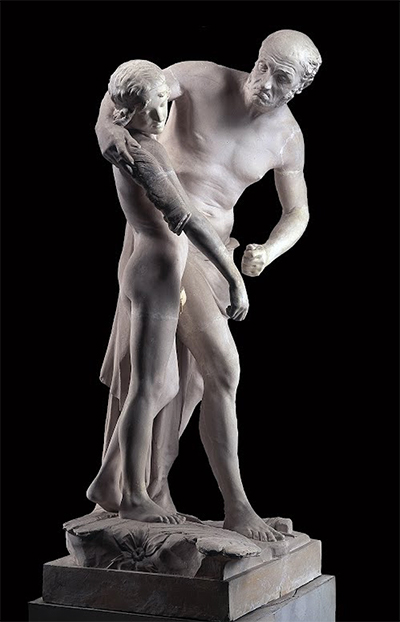Daedalus and Icarus is a masterpiece sculpture that was made by the talented and renowned Antonio Canova. It was sculptured back in the year 1779. It has a mythological theme, based on the mythological story of Daedalus and Icarus.
The statue is a depiction of Daedalus standing upright and fixing waxwings on the shoulders of his son Icarus, who is standing right next to him, and tools scattered all around them. According to the myth, he was doing that so both he and his son could fly and escape imprisonment.
Statue Representation
The statue's natural representation of Daedalus, who was believed to be the mythological ancestor of all artists, resulted in numerous suggestions that it was a portrait of Antonio Canova's grandfather, who was called Pasino. The aging physique of Daedalus makes the argument quite convincing. Daedalus’ tools, which are scattered at the statue's base, are also believed to be an illusion to the sculpture.
Properties of the Statue
The piece is made entirely using marble. It measures 200 cm by 95 cm by 97 cm. It has been displayed in many different museums over the years but is currently in Museo Correr, Venice. The artistic motivation involved in the Daedalus and Icarus marble sculpture was to challenge classical statues, as Antonio was still a young artist when he was curving it. It was the first-ever marble sculpture that he made, commissioned by procurator Pietro Pisani.
The Sculpting Process
He hired some workers to carve the initial statue figure from the marble, which helped to reduce the time it took to complete the work. He then focused on the surface and worked every detail to perfection, all by himself. The work was done in his studio at Calle Del Traghetto, which he had just opened in the same year. The statue was later showcased at the annual art fair, and it brought great admiration to Antonio's work. He earned 100 gold zucchini for his completed work.
Related Artwork
Daedalus and Icarus was the first marble sculpture ever made by Antonio Canova, but definitely not the last. There are many other statues that he made in the following years, which include Theseus and the Minotaur, Cupid and Psyche, Napoleon as Mars, Perseus with the Head of Medusa, Paris, Paolina Borghese as Venus Victrix, and The Three Graces, among many others. He completed several sculptures in 1822, the year in which he died, including Mars and Venus, Sleeping Nymph, Endymion, and Death of Adonis.




